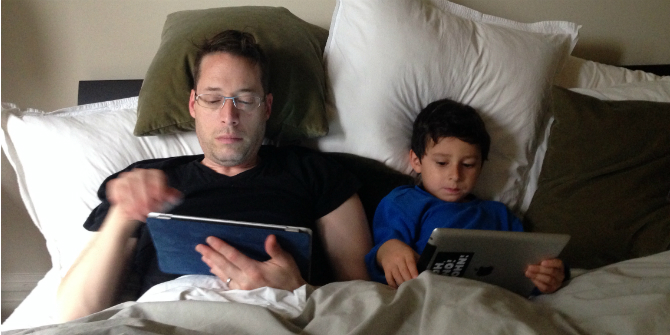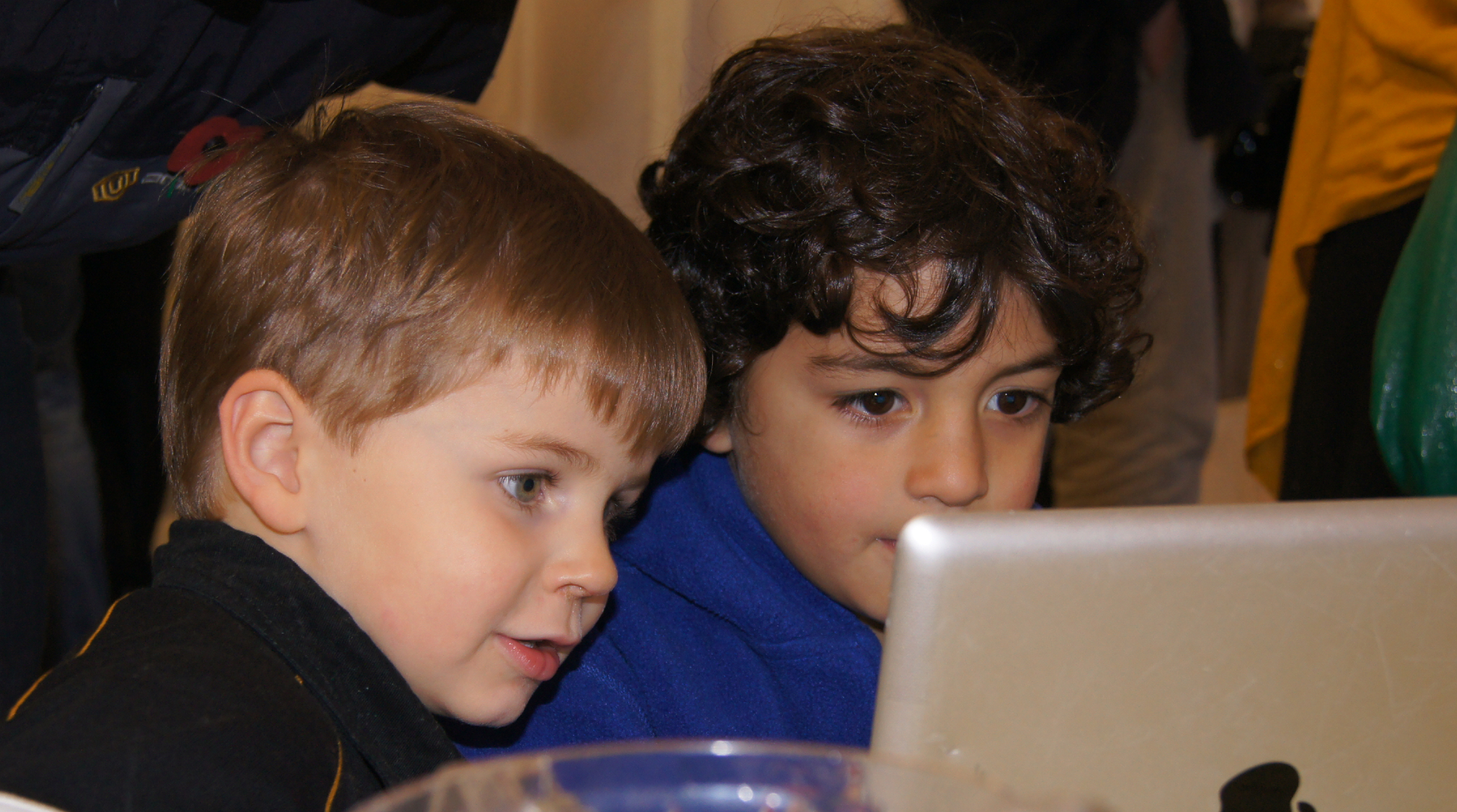 Full speed ahead into the new year, we reflect on what we learned over the past six months. P4DF has followed some prominent issues related to children’s internet use and digital parenting.
Full speed ahead into the new year, we reflect on what we learned over the past six months. P4DF has followed some prominent issues related to children’s internet use and digital parenting.
Mental health and wellbeing
Mental health and wellbeing were the focus of several Parenting for a Digital Future blog posts. Sonia Livingstone and Mariya Stoilova discussed their new report on the impact of digital experiences on adolescents with mental health vulnerabilities and the implications for platform regulation. They argued that it is difficult, if not impossible, to pull apart the risks and opportunities of digital engagement. By participating in niche communities focused on specific mental health difficulties, young people can attain a sense of validation and belonging. But in turn, their problems can be triggered, even encouraged by the collective norms of self-harm or pro-anorexia communities, and thus amplified and made worse.
Commenting on UNICEF’s new flagship State of the World’s Children report On My Mind, Mariya Stoilova explored how the digital environment supports children’s vulnerability or resilience, potentially making a difference between wellbeing and harm. Programmes must emphasise the digital, she argued, not only as crucial for children’s everyday lives but also for its potential for mental health diagnosis, treatment and support. However, this such efforts must strike a balance between minimising the risks and maximising the beneficial and protective factors, whether digital or non-digital. Illustrating one way forward, Ditch The Label – an international youth charity supporting 12-25 year olds – shared their expertise on how they manage to provide young people with mental health support.
Online risks and opportunities
In a pre-Christmas contribution, Miriam Rahali discussed the marketing tactic of child influencers ‘unboxing’ new toys on social media, arguing that parents should be made aware of the possible benefits and harms of influencer culture on young audiences, while Al Mik considered the problematic nature of commercially-driven models of digital play and how they affect children’s creativity and freedom online.
Andreas Chmielowski explored Austrian children’s views of the online benefits and risks, their varying degrees of skills and competence, and the e-safety strategies they use. Children demonstrated ICT competence to varying degrees and awareness of the associated risks, but for few did this enable independent steps to protect themselves. Younger children especially tend to follow parental rules designed to protect them instead.
Cristina Ponte, Maria João Leote de Carvalho and Susana Batista discussed the Portuguese findings of EU Kids Online and the intersection of online victimisation and aggression; interestingly, greater digital skills and emotional vulnerability are common to both.
Elena Martellozzo and Paula Bradbury showed how the pandemic has made young people more vulnerable to risky online sexual trade by facilitating opportunities for digital immersion, increasing the chances of stumbling across age-inappropriate sexual content. In another blog, they examined the risks posed by OnlyFans, a social media platform where users can sell and/or purchase original softcore or X-rated content.
Learning and education
Sonia Livingstone, Giovanna Mascheroni and Mariya Stoilova argued that digital skills are not all created equal, and that teaching technical skills alone is problematic. Although technical skills are associated with a positive orientation to technology, they are also linked to more online risks and reduced civic participation among young people. The findings for gaining information skills are more promising – linked to beneficial outcomes such as civic participation, online opportunities, higher academic grades, reduced online risks and more privacy-protective behaviour online.
Gianfranco Polizzi and Tom Harrison discussed how “cyber-wisdom” (the ability to do the right thing at the right time when online) can benefit digital citizenship education, enabling children to make better ethical decisions online, particularly when interacting with others. Digital citizenship was also discussed by Devina Sarwatay who explored how digital inequalities in India affect children’s media literacy and impact their futures. She called for updating the current media literacy and digital citizenship curriculum to reflect children’s needs in the contemporary digital environment. This also would facilitate digital resilience and protect children’s rights, she suggested.
Finally, a couple of blogs focused on school policies and practices. Joshua Rosenberg discussed US-based research showing that schools’ social media activity may harm students’ privacy. Schools’ posts are public – not only accessible to anyone but also susceptible to data mining methods, he pointed out. School practices were also the focus of a blog by Velislava Hillman on algorithmic (in)justice in education. Given the growing power of education technology businesses in public education, Hillman argued for licensing EdTech products to address concerns related to inequalities, discrimination and children’s wellbeing.
Children’s rights and voice
Children’s experiences of learning during the pandemic receive media attention but are rarely heard in decision-making processes. Laurie Day demonstrated the urgency of including young people as partners in the recovery from the COVID-19 crisis. Far from being ill-informed, he found that young people hold strong views about political and public responses to the crisis, drawing on their own family life, friendships, and access to education and healthcare.
Sonia Livingstone, Kristen Hope-Burchill and Konstantinos Papachristou examined the impact of the pandemic on children’s digital lives and how governments can develop and implement policies to protect their rights. The #CovidUnder19 project responded to the new General Comment 25 on the digital environment by the UN Committee on the Rights of the Child by canvassing children’s views on how governments, businesses, law enforcement, educators and health professionals can respect and protect children’s rights in the digital environment.
Policy and regulation
Protecting users in modern data-driven societies requires a comprehensive and holistic approach involving multiple stakeholders from designers to digital providers to governments and end-users. Illustrating this, Kruakae Pothong and Sonia Livingstone compared the UK government’s “Secure by Design” approach to children’s online safety to the Australian “Safety by Design” to grasp the implications for children’s rights in a digital world.
Complementing design and policy changes is the importance of media literacy. Commenting on the UK government’s new Online Media Literacy Strategy, Sonia Livingstone argued that this is a missed opportunity to truly develop the public’s media literacy in a way that promotes creative, educational, economic, civic, political and community goals in the digital age. Media literacy is also prominent in the UK’s draft Online Safety Bill 2021: reflecting on this, Sonia Livingstone warned of the dangers of answering calls for internet regulation with counter-calls for more media literacy. Both are needed, but it is important not to shift the burden of responsibility from those creating or amplifying online harms onto their victims. Increasingly, hopes are placed on age-appropriate design and age assurance but Simone van der Hof argued that many of the methods currently used are either inefficient, privacy-invasive or risk infringing children rights.
Finally
We look forward to blogging about the latest research on parenting and childhood in a digital world. It is important to integrate the lessons learned so far into parenting and teaching practices, as well as into educational policies and regulatory decisions if society is to better manage what looks like another challenging year ahead.
If you don’t already subscribe to our blog, please click here.
First published at www.parenting.digital, this post represents the views of the authors and not the position of the Parenting for a Digital Future blog, nor of the London School of Economics and Political Science.
You are free to republish the text of this article under Creative Commons licence crediting www.parenting.digital and the author of the piece. Please note that images are not included in this blanket licence.
Featured image: photo by T. Warren, CC BY-NC 2.0





